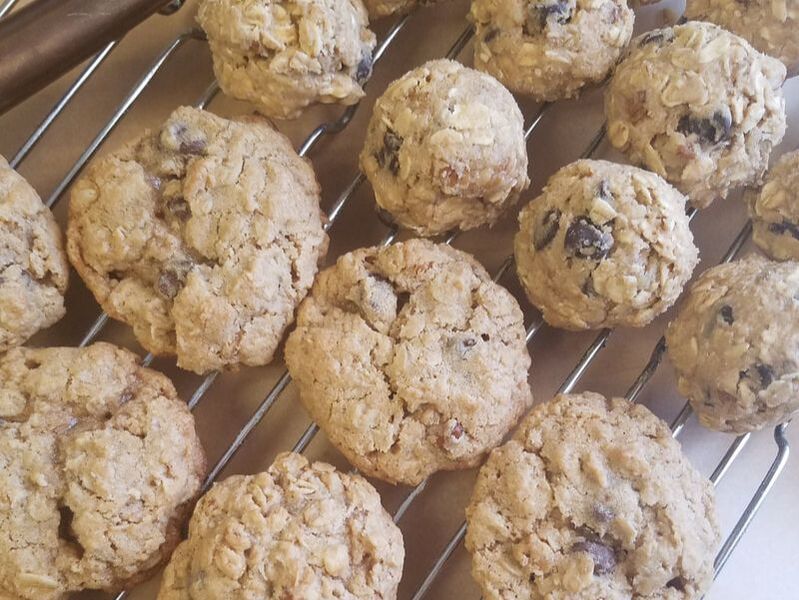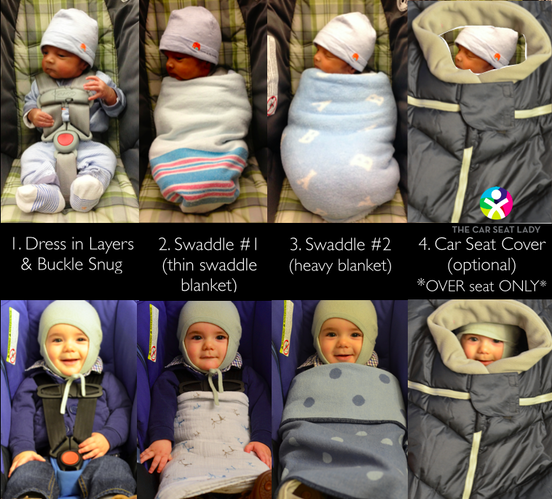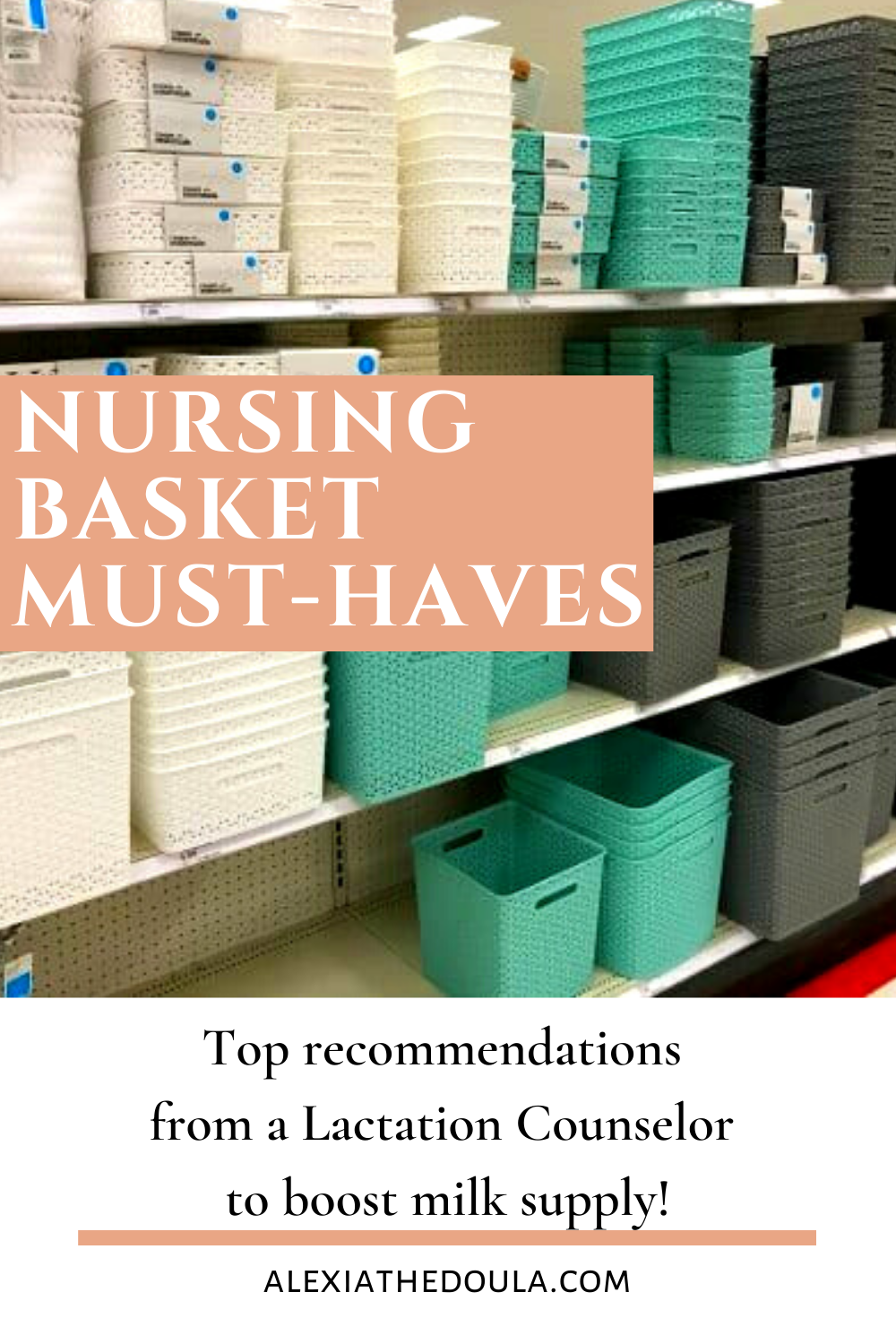|
This love letter to the days of in-between at the end of pregnancy, was originally posted on mothering.com by Jana Studelska CPM/LM. The last days of pregnancy are a distinct time of in-between. It's a tricky time for mothers, as these last few days are biological and psychological events.She's curled up on the couch, waiting, a ball of baby and emotions. A scrambled pile of books on pregnancy, labor, baby names, breastfeeding and not one more word can be absorbed. The birth supplies are loaded in a laundry basket, ready for action. The freezer is filled with meals, the car seat installed, the camera charged. It's time to hurry up and wait. Not a comfortable place to be, but wholly necessary.
The last days of pregnancy - sometimes stretching to agonizing weeks - are a distinct place, time, event, stage. It is a time of in between. Neither here nor there. Your old self and your new self, balanced on the edge of a pregnancy. One foot in your old world, one foot in a new world. Shouldn't there be a word for this state of being, describing the time and place where mothers linger, waiting to be called forward? Germans have a word, zwischen, which means between. I've co-opted that word for my own obstetrical uses. When I sense the discomfort and tension of late pregnancy in my clients, I suggest that they are now in The Time of Zwischen. The time of in between, where the opening begins. Giving it a name gives it dimension, an experience closer to wonder than endurance. I tell these beautiful, round, swollen, weepy women to go with it and be okay there. Feel it, think it, don't push it away. Write it down, sing really loudly when no one else is home, go commune with nature, or crawl into your own mama's lap so she can rub your head until you feel better. I tell their men to let go of their worry; this is an early sign of labor. I encourage them to sequester themselves if they need space, to go out if they need distraction, to enjoy the last hours of this life-as-they-now-know-it. I try to give them permission to follow the instinctual gravitational pulls that are at work within them, just as real and necessary as labor. The discomforts of late pregnancy are easy to Google: painful pelvis, squished bladder, swollen ankles, leaky nipples, weight unevenly distributed in a girth that makes scratching an itch at ankle level a feat of flexibility. "You might find yourself teary and exhausted," says one website, "but your baby is coming soon!" Cheer up, sweetie, you're having a baby. More messaging that what is going on is incidental and insignificant. What we don't have is reverence or relevance - or even a working understanding of the vulnerability and openness a woman experiences at this time. Our language and culture fails us. This surely explains why many women find this time so complicated and tricky. But whether we recognize it or not, these last days of pregnancy are a distinct biologic and psychological event, essential to the birth of a mother. We don't scientifically understand the complex hormones at play that loosen both her hips and her awareness. In fact, this uncomfortable time of aching is an early form of labor in which a woman begins opening her cervix and her soul. Someday, maybe we will be able to quantify this hormonal advance - the prolactin, oxytocin, cortisol, relaxin. But for now, it is still shrouded in mystery, and we know only how to measure thinning and dilation. I believe that this is more than biological. It is spiritual. To give birth, whether at home in a birth tub with candles and family or in a surgical suite with machines and a neonatal team, a woman must go to the place between this world and the next, to that thin membrane between here and there. To the place where life comes from, to the mystery, in order to reach over to bring forth the child that is hers. The heroic tales of Odysseus are with us, each ordinary day. This round woman is not going into battle, but she is going to the edge of her being where every resource she has will be called on to assist in this journey. We need time and space to prepare for that journey. And somewhere, deep inside us, at a primal level, our cells and hormones and mind and soul know this, and begin the work with or without our awareness. I call out Zwischen in prenatals as a way of offering comfort and, also, as a way of offering protection. I see how simple it is to exploit and abuse this time. A scheduled induction is seductive, promising a sense of control. Fearful and confused family can trigger a crisis of confidence. We are not a culture that waits for anything, nor are we believers in normal birth; waiting for a baby can feel like insanity. Giving this a name points her toward listening and developing her own intuition. That, in turn, is a powerful training ground for motherhood. Today, I am waiting for a lovely new mother named Allison to call me, to announce that her Zwischen is ended and labor has begun. I am in my own in between place, waiting. My opportunity to grow and open is a lovely gift she gives me, in choosing me to attend her birth. - - - - - - - - - - - - - - - - - - - - - - - - - - - Jana Studelska CPM/LM, is a licensed midwife practicing in northern Minnesota and Wisconsin. She has been working with babies and mothers since 1998--as a La Leche leader, a certified doula, a childbirth educator, a regional birth network board member, and finally as a credentialed midwife. She is an author and writer, and has won several national awards for her work. Currently, she is the MANA Region 4 Representative for the Midwives Alliance, representing the upper midwest. She lives in Duluth, MN, with her husband, teen-aged boys, and a herd of dogs.
This recipe is part of the Hola Postpartum Freezer Meal Guide (which is included as part of my doula services when chosen to work together). Hola Postpartum is my side passion of creating healthful, nurturing food for the postpartum and nursing parent. These cookies have been tested over and over, and I have it just right for you to enjoy while sitting and holding your baby.
During your 3rd trimester, I highly recommend to make this recipe 3x over and freeze the dough balls individually so you can grab and bake when you are ready for a treat. If you have other littles and/or a partner at home, they will also love this recipe! And no, eating lactation cookies will not make your partner magically start lactating (even though every nursing mother hopes that they would to share the responsibilities that comes with breastfeeding), but they may eat them all because they're so good. So hide them! You know, it that one spot you hide all other other treats from the older children and/or partner. No worries. I won't tell them. Here is the cookie recipe for you dears: https://holapostpartum.com/blog/lactation-cookies-that-truly-boost-your-milk-supply And if there is any concern about me sharing a recipe that may not be mine, please rest assure this share is okay. Hola Postpartum LLC is also owned by me and I'm the recipe creator. So all in all, I approve you clicking and making ASAP. Happy Baking loves! Alexia, your doula With the end of Daylight Savings coming up on Nov 7th, it is time to make some small changes to help make the transition easier for the whole family. Typically we as adults can make the shift within a day or two to the time change. It takes us a bit because we focus more on the clock and our day’s schedule (plus we get slightly bummed when we see it is dark at 5pm now). Our babies are a different story. Babies thrive off of patterns and toddlers off of routines. Typically what disrupts their sleep more than the upcoming time change is their neurological and developmental growth spurts, teething, illness, or the array of changes their bodies go through in the first few years. Babies/toddlers need a few simple approaches from their parents to make this upcoming time change easier for us as parents, and thus a smoother one for them too. Recognize Baby/Toddler Sleep Cues
As it will soon be darker sooner, we as adults start to feel tired sooner as well because of the lack of light at 5pm. That is our Melatonin being released within our body as it places us into quiet wakefulness. Our babies’ melatonin production, and circadian rhythm, are not fully present until 12weeks of age. So it is best to look for sleep cues: disengagement with play, yawning, red eyes & rosy cheeks or fussiness are a few of the best indicators of when we should work towards bedtime. Work with, not against, babies/toddlers’ sleep signals and cues regardless of the time on the clock…which brings us to our next tip. Focus on Pattern/Routine more than Schedules You’re probably looking at this and wondering ‘What’s the difference?’. As adults we focus on schedules such as ‘Out the door by 8am, day care by 820a, on the road by 830a, at work by 9a, pump at 10a, meeting at 1030am, etc.’ Our schedules are based off of the clock. Our babies and toddlers are fully unaware of the clock and its time, but they know it’s time to leave the house because they had food at the high chair, were cleaned up, played on the floor while they watched you run around house to get ready to leave, their jacket was placed on them, and then into their carseat. Routines, patterns. So with the time change, we as adults may focus on the time on the clock, but our children will be driven by their routine/patterns. Focus on keeping the routine or bedtime pattern consistent to for a smoother transition into bed. Ensure Sleep-Friendly Environments This may be easier as we “fall back” it will be dark at bedtime in comparison to “spring forward” where there is more light at bedtime. For this tip, you’ll want to keep the foundation of sleep-friendly environment for your little one: cool, dark, white noise machine and no night light (some babes are very sensitive to just a bit of light). Place it all Together Look for your babies/toddlers earliest sleep cues, begin your regular bedtime routine/pattern and at the end of the routine/pattern where baby is nursing to sleep or when toddler is drowsy ensure the sleep environment promotes sleep. Follow your baby/toddler cues, and don’t look at the clock too much. It is normal babies and toddlers to wake at night that has nothing to do with the end of daylight savings. Our children need our support and guidance and as they mature, so will their sleep. Allow the time change to encourage a slowing in your evening and learning more about your little one. It’s hard for us all, and you are doing amazing! An oldie, but a goodie! Winter is here....like, all the time. It's Minnesota. So your cousin gives you a baby snowsuit and when you place baby in it they look like a little baby marshmallow and IT IS THE CUTEST THING YOU HAVE EVERY SEEN. But as cute as it is, it is not safe to have baby in a snowsuit while in the carseat locked into the car. There is too much fluffiness, that the straps cannot be as snug to keep baby as safe as possible in their carseat. Instead, best practice in keeping baby warm AND safe in their carseat is shown in the image above. Secure baby to their carseat ensuring they are nice and snug, and then wrap them with blankets and lastly place a shower cap like baby careseat cover over them. Lock them into your carseat base, and then unzip the carseat cover and/or remove a blanket to ensure baby does not get overheated riding in the backseat (place your hand on their chest to gauge their temp and place or remove blankets as needed). As your baby gets older and starts to fling their around around like the crazy monkey that they are, then ensure to wrap their blankets under their arms. So when can you use that amazing snowsuit? When you are going for a wintery walk, that snowsuit will be amazing in keeping baby warm as you enjoy our never-ending winter wonderful that is the frozen Minnesota tundra. For more information, check out The Car Seat Lady: http://thecarseatlady.com/warmandsafe/ Happy snow driving friends!
Happy basket buying!!We spend so much time preparing for labor & birth and baby stuff, we often forget to prepare for our own recovery after birth (known as the postpartum period or 4th trimester). I was the same. My day was spent nursing, healing cracked nipples, nursing, sitting in stiz baths, nursing, sitting on a donut pillow, nursing, wondering when I could take a shower, nursing, unable to grab my snacks, nursing…get the pattern? I was overwhelmed by the newness of my healing postpartum body, learning how to breastfeed and how to keep a tiny human alive and thriving AND keep up with my pre-birth American life. That’s where I went wrong. I was trying to keep up with what I thought other American mothers were doing just days after delivery, and I could barely get food or a shower into my day. I was reminded a couple of weeks into my parenthood by my Mexican cousins about the postpartum Cuarentena; 6-weeks of lying in to optimize postpartum healing and to help baby transition easily from the womb world to the outside world. This Cuarentena lying in practice enables the brither’s body to recover more efficiently and effectively as it allows the uterus to cramp back to its regular size and back into its correct alignment and position. It also helps lessen your postpartum bleeding, allows your perineum or cesarean incision feel better, calms swollen legs and feet, and gives your organs time to reposition to their old homes. Plus it benefits your breastmilk supply as you an focus on your baby and catch their early hunger cues to boost your milk supply. And there are benefits to baby too – you are HOME to your baby. Your baby goes through a crazy roller-coaster of birth, and its bright, cold, loud and so.much.space out here that babies are out of their element for awhile. When mothers practice lying in, they hold their babies more which makes your baby feel more secure as your body will feel, smell, sound and taste like their womb home. You are your baby’s home. These first 3months are an extension of the pregnancy for your baby. But 6 WEEKS lying in?! Ugh, I was two weeks in and already sick of seeing the same four walls. How about a 5-5-5 rule instead? So much more doable. A rule of thumb to a healthier postpartum is a lying in period that is only 15days. 5 days IN bed – Stay in bed or on the couch. The goal is to be off your feet and allow others to serve you. This is the beginning of your babymoon, where you chill with baby in bed, skin-to-skin and learn who they are and their personality. 5 days ON bed – No more than 30min cumulatively on your feet within a 3hr cycle. Getting sick of being only inside your house? Great, go get the mail and come back and sit/lie down. Make some lactation energy balls, and then go chill with baby and Netflix for awhile. The goal is to still rest as much as you can, with minimal time on your feet. 5 days NEAR bed – No more than 30min cumulatively on your feet within a 90min cycle. Maybe you are now feeling like taking on one household activity per day, some stretches or yoga. But rest is still the utmost importance. Do not take on all your previous responsibilities yet. Note, if you are recovering from a cesarean birth then the recommendation changes to the 7-7-7 rule: 7 days IN bed, 7 days ON bed and 7 days NEAR bed. Begin to make plans now in pregnancy to give yourself the gift of 15days of lying in and getting to know your baby. Focusing on your well-being first will help you care for baby in amazing ways! Happy Postpartum Friends!1/17/2021 Ready for Labor Series: Test Your Knowledge about Common Labor Interventions as well as Labor InductionRead Now I love me some good trivia games. I get a little over competitive and definitely over confident in wanting to crush my trivia opponents. So, let's combine the fun of trivia and my love of labor education!! Doesn't this sound like the BEST date night during your pregnancy?! *wink, wink* In my classes we discuss these options, and it can feel like an educational lecture. Not as interactive as I would love for it to be. So let's test your knowledge after our class together to see what you remember and where we can fill in gaps for education. If you have yet to take a class with me, then let's connect and help feel more prepared for the labor process. Connect with me here. First up, let's test your knowledge around Common Labor Interventions such as fetal monitoring, IV fluids, pelvic exams and eating & drinking in labor. Written in a jeopardy manner, play alongside your partner and see who will win the dessert in the back of your freezer. PLAY HERE. After you have beaten that game, follow it up in testing your knowledge around Labor Inductions and Augmentation (using medications to start and/or speed up labor), such as pitocin, cervical ripening, sweep/stripping the membranes, & AROM (breaking your bag of waters for you). PLAY THIS GAME HERE. Now comment below. How did you do? Who won the game? Happy playing trivia friends!Funny how the media portrays labor beginning: Water breaks everywhere, woman screams, hails a cab, shows up at the hospital and baby is born less than 5min. Woah! What drama! Seems like a woman in labor = everyone should freak out. Let’s talk about how it really goes. You are within 39-41weeks (as evidence supports about 90% of women go into labor on their own within these two weeks), you go to bed, get your fort of pillows built up around you and finally find a comfortable position to fall asleep. In the middle of the night, you wake to the feeling of you peeing yourself. “Ah balls!” is your thought as you check to see if your partner is still asleep. So, you sprint (as quickly as a 39-41week woman can sprint) to the bathroom to clean up. You go back to bed and as your leg hugs your pregnancy pillow, you feel more pee come out again. “WTF? I’ve lost full control of my body” Are you peeing yourself? Maybe. But maybe your water is leaking. Meaning, your water might have broken. So, here’s the real deal… About 8-10% of women start labor with their water breaking. That’s all! Only about 8-10%. For the rest, it typically breaks the closer you are to pushing. Okay, so what does water breaking have to do with tacos? Well, if your water breaks outside of your birthplace you’ll want to take note of TACO. (T.A.C.O.) Time, Amount, Color, Odor These are things that your prenatal healthcare provider will want to know. TIME – There is an increased risk of infection as time passes once your water breaks, especially with more frequent vaginal exams. Your midwife or doctor may want to induce labor if contractions do not start on their own within 12-24hrs. AMOUNT – No, you don’t need to squeegee the fluid into a measuring cup to see how many ounces you are leaking. Just note whether it is a trickle or a gush. If you are unsure if your water has broken, go to the bathroom, urinate, place a medium flow sanitary pad in your underwear, go lay down on your side for 10-15 minutes and then stand up. If water has pooled in your uterus and/or vagina and comes out when you stand up or if your pad fills up within half an hour, it would be a strong indication that your water broke. COLOR – Should be clear. Yellow or greenish brown color would indicate that baby had a bowel movement in utero called meconium. ODOR – A mild or odorless smell is normal but a strong odor may indicate infection. After your water breaks, make sure to place a sanitary napkin in your underwear as you will continue to leak with many position changes and/or during a contraction as your placenta continues to produce amniotic fluid until it is birthed. Extra Notes: *If your water breaks and you are Group B Strep positive, your prenatal healthcare provider will want you to come to the birthplace right away so that they may administer antibiotics to you (as recommended by the CDC). *If your water breaks, Group B Strep negative and are not having contractions, you may consider staying home to try to bring on contractions (evidence supports within 12hours 45% of birthers will begin to experience contractions). Walking and hula hoops on a birth ball can be helpful during this time. *In labor, your prenatal healthcare provider will break your bags of water to ”help move your labor along” (aka augment labor). You always have a choice in this and have the right to discuss the benefits, risks and alternatives before following your intuition about this procedure (also called AROM, artificial rupture of membranes). *As noted above, typically your water will break on its own at some point during labor. If this happens, let your healthcare team know so they can note TACO as well as provide you a pad for the continuous leaking. Happy leaking from your vagina friends!
Overnight Bag (think 3night stay): o Your own face masks (hospital will provide if you do not bring one) o Toiletries for each parent (toothbrush, toothpaste, hair brush, deodorant, lotion, shampoo, etc.) o Electronic chargers (phone, iPad, camera, etc.) o Your own pillow, pajamas and clothes (you’ll still look about 6mo, so bring loose fitting and/or maternity) o Partner pillow, pajamas, clothing, and a sweatshirt o Nursing Bra and/or nursing tank tops o White noise machine to encourage better rest o Copy of insurance information and your ID Baby items: o 2-3 Baby outfits o Blanket to wrap baby in o Infant car seat – Bring with you into the hospital when you arrive in labor, or for your scheduled induction or cesarean o Pediatrician or Family Practice doctor and doctor’s office information o Your own brand of diapers* (This is optional; most Minneapolis/St.Paul hospitals have pampers for you to use during your stay) o Your own brand of wipes* (This is optional; most Minneapolis/St.Paul hospitals have dry wipes for you to wet down with warm water from the bathroom for you to use during your stay) o Your own brand of an infant formula* (This is optional; all Minneapolis/St.Paul hospitals have donor breastmilk and formula to use if supplementing is recommended. Also, if supplementing is recommended and your goal is to 100% breastfeed your baby your breastmilk, please contact a lactation professional.) For Labor: o Gallon ZipLoc Bags, to make ice packs o Rebozo o Lacrosse Balls (for massage bottom and hips, plus great for counterpressure on lower back) o Other massage tools8 (optional) o Massage oil (coconut or almond oil are great, and if looking for odorless try cornstarch) o Lip Balm o Essential oils or other favorite scents (i.e. lavender, lemongrass, clary sage, peppermint, citrus, etc.) o Phone or iPod/iPad with your labor music lists ranging from energetic to soothing o Blue tooth speaker o Small Tripod to set up smartphone or tablet to talk with your virtual doula or take photos o A comfy wardrobe (i.e. knee-length skirt/dress, robe, slippers, soft bra easily removed, & warm socks) o Swim top/Bralette to stay covered, if desired, while in tub for hydrotherapy o Partner bring your swimsuit too if joining birther in the tub for better hands-on support. o Electric tea light candles or simple string of lights to bring dim lighting o Camera/video camera o Copies of birth plan/birth wish list/preferences o Copies of your labor/birth mantras and affirmations o Copies of your labor/birth visual encouragements or inspiring photos Food for your Labor and Stay (partner may not be able to leave to grab food, so plan to bring some extra meals that the hospital will not be providing. Nurses can help bring items to the microwave to heat up when needed. Most Postpartum Recovery rooms have refrigerators, but not all labor&delivery rooms.): o Dates – Eating 6 dates/day in the last 4weeks of your pregnancy, evidence supports it can significantly shorten your labor and be more efficient. o Plain Water & Beverages with electrolytes (i.e. coconut water, gatorade, emergen-C, etc) – use a bottle with a straw (a water bottle for partner too) o Light snacks for birthing mom (i.e. Applesauce, Oatmeal, Pancakes/Waffles, Homemade energy bites, Broth, Raw Honey Sticks (broth and honey sticks are great to sip on if you have an epidural)) o Bigger snacks/meals for birthing partner and postpartum recovery birther (i.e. Sandwiches, Salads/Stirfrys/Grain Bowls, Soups, Trail mix, Granola bars, Nuts, Crackers & Cheese, Fresh fruit/Veggies, Other snacky items) o Breath Mints to be close to birther This list may seem big, but many of these items are quite small. And you never regret bringing extra snacks anywhere in life! Happy packing!
For Cesarean Birth Moms, everything above plus:
Your healthcare provider may recommend the following medications. Please consult with your medical provider prior to taking any of the following medications.
Lastly, it is encouraged by The American College of Obstetricians and Gynecologists you are seen by your prenatal provider within 2-3 weeks post-delivery and again within 12 weeks post-delivery to ensure optimal physical recovery. So call your prenatal health provider and schedule your appointment! You deserve the best postpartum care EVER!! Happy Recovery! Alexia |
Details
Alexia the DoulaBirth Doula, Childbirth Educator & Postpartum Doula serving Minneapolis, St Paul and the greater Twin Cities area. History
May 2022
Topics
All
|
Proudly powered by Weebly










 RSS Feed
RSS Feed
